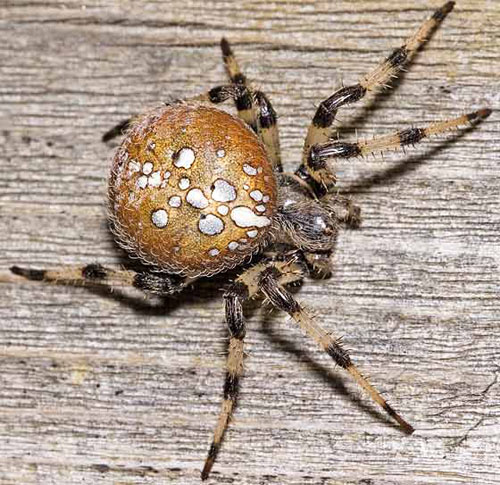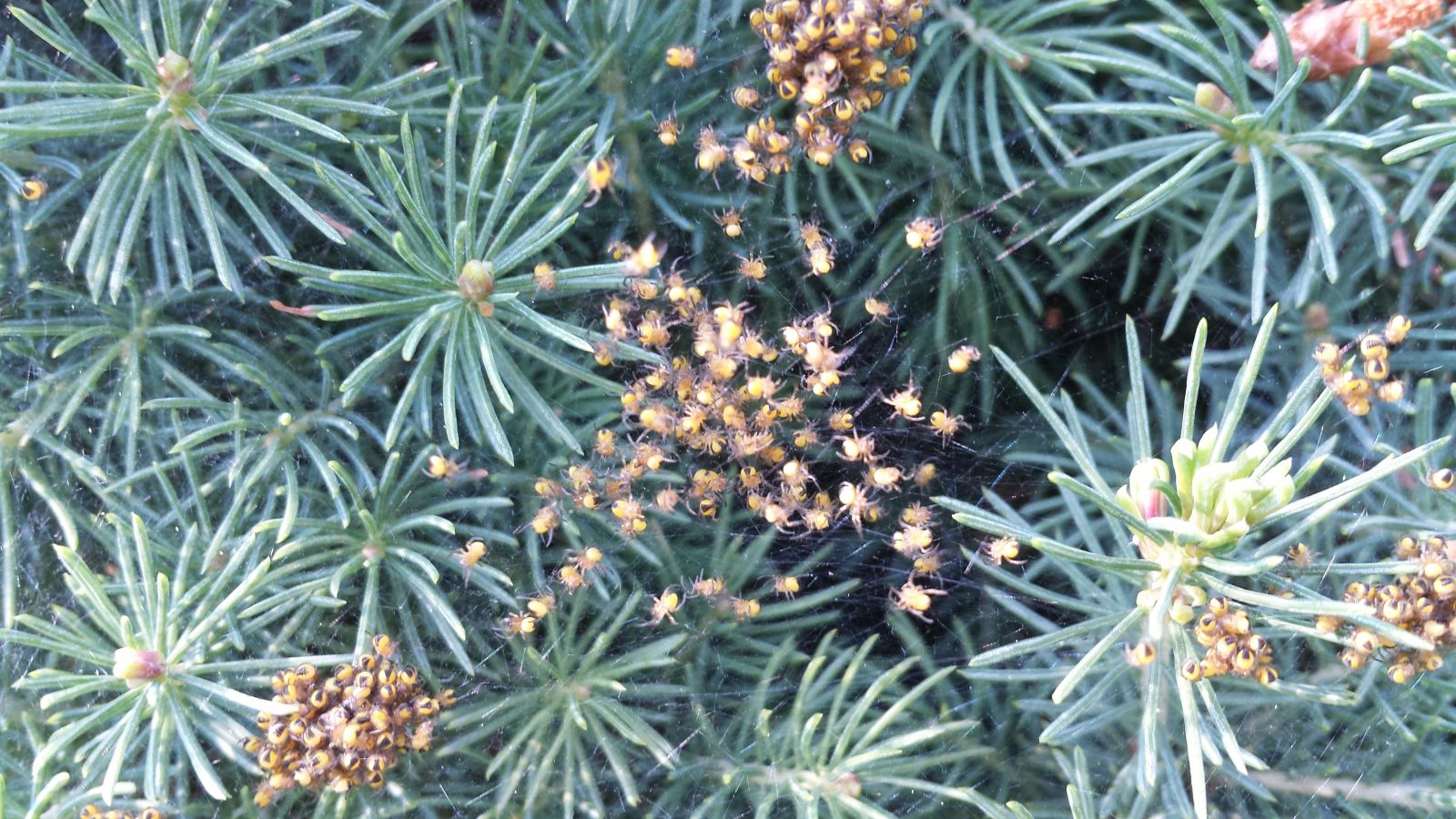Spiders
General Description
Spiders are easily recognized but little appreciated for the very important role they play in helping to control most pests. Unfortunately they also prey upon beneficial insects.
Hosts
Fast running wolf and other ground-dwelling spiders feed on caterpillars and any other insects they can capture. Colourful jumping spiders (Fig. 1) and crab spiders search both the tree canopies and ground cover for prey.
| Figure 1. Jumping spider (H. Philip) |
Orb-weaver (Fig. 2, 3) and other web-building spiders wait near or on their intricate webs among the branches of trees and shrubs and on structures to pounce on unwary flying and crawling insects.
 |
.jpg) |
| Figure 2. Orb weaver spider. | Figure 3. Orb weaver web. (H. Philip) |
Damage
Identification
All mobile stages of spiders have eight legs and only two apparent body sections. Adults vary in size, colouration, hunting tactics, and habitat.
Life History
Spiders overwinter as adults or eggs in protected sites within and outside orchards, In the spring adults become active, searching for prey within the tree canopies. Eggs are laid in silken sacs and eggs in the fall of spring, depending on species. The newly hatched spiderlings release a strand of silk that eventually is captured by air currents that disperse them throughout the orchard (called ballooning) (Fig. 4). Usually only one generation per year.
 |
| Figure 4. Newly hatched spiderlings. (H. Philip) |
Monitoring
Limb taps can often dislodge non-web spinning spiders.
